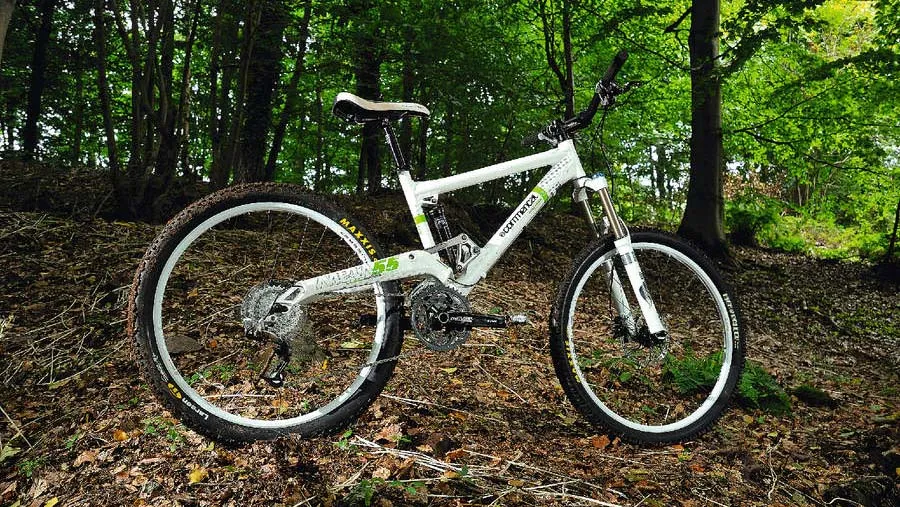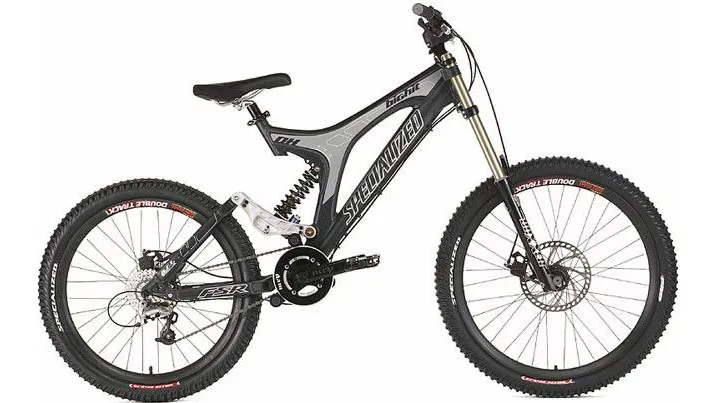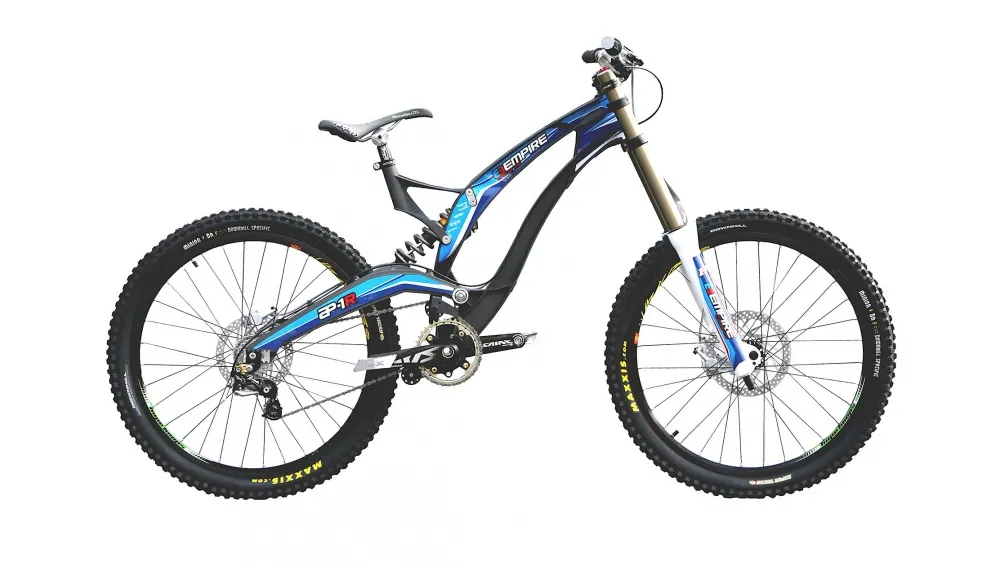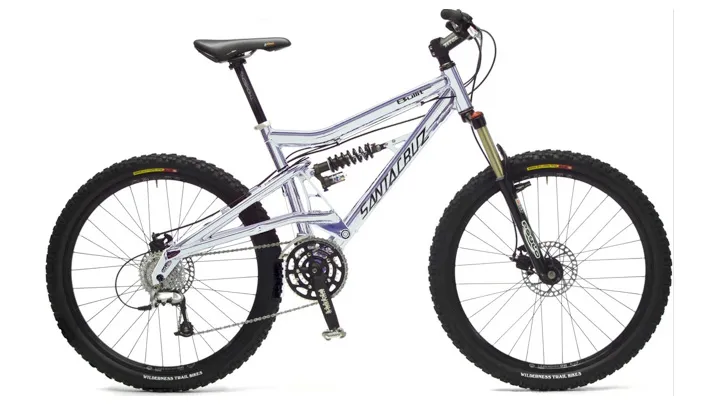Like a beautiful dive that ends up as a painful-looking belly flop, sometimes something can look like it's going perfectly and end up being a bit of a nightmare.
It's the same within the bike industry. Many a brand has managed to snap defeat from the jaws of victory and solidly boot the ball of life into the own-goal of ignominy by trying too hard or failing to cover the basics. Between the staff at BikeRadar, What Mountain Bike and Mountain Biking UK, we've got decades of bike-testing experience under out belts, so we've seen more that a few bikes that were a hair's breadth away from brilliance but managed to screw it up. In no particular order, here are six bikes that did just that.
- 10 entirely convincing reasons to buy a new bike
- 8 mountain bike tech fails that their manufacturers wish you'd forget
- 6 common beginner's bike maintenance fails
1. 2007-2009 Commencal Meta 5.5

In many ways, the Meta was one of the first truly modern trail bikes. It had 140mm of travel at either end with a smooth and progressive linkage-driven, single-pivot design at the rear, a confidently slack head angle and an infectious character that’d have you hooning it into the most technical and tight trails you could find. While it didn’t fit into any traditional categories, being too hefty for true XC riding and under-suspended for pure gravity work, it found huge favour with riders who enjoyed thrashing the descents and chatting on the climbs – think of it as proto-enduro.
That brings us neatly to the flaw. While the Commencal inspired riders to push ever harder, that took a toll on the aluminium frame and early models were almost legendary for frame failures, with hairline cracks from fatigue being the most common issue. Their owners quite literally loved them to death. Commencal eventually beefed up the bike, which helped contain the problem, but a reputation had been established and stuck until the whole bike was redesigned as the Meta V2.
2. 2009 Orange ST4

British bike manufacturers Orange were – and still are – well known for their handcrafted single-pivot design with monocoque rear swingarms, but they tried something a bit new with the ST4. Designed to be a lighter, shorter-travel option for anyone that thought the hugely popular Five was a bit too much bike. The ST4 also used a revolutionary – well, by the almost unchanging standards of Orange – rear suspension design. Instead of the big swingarm directly driving the shock, it used a linkage design. That allowed Orange more control of the suspension curve and meant that the ST4 was actually a ridiculously capable and fun bike despite the short travel.
The ST4 had a back end that was as bendy as a limbo champion
That confident feel meant people rode them hard despite the short travel, which then brought less desirable features to the fore, namely a back end that was as bendy as a limbo champion and nowhere near as tough. Orange ended up ‘detuning’ the bike to try and stop riders pushing their bikes to failure, while the chainstays were swapped out for chunkier rectangular items, which in turn pushed up weight. That meant it struggled to compete with its big brother on weight or ride quality. Combined with the fact traditional Orange buyers wanted a bike that looked like a traditional Orange, it meant the writing was on the wall.
3. 2001-2005 Specialized Big Hit

The very first Big Hit just goes to show that messing about with wheelsize isn’t a modern phenomenon in the world of mountain biking. However, instead of going bigger, the Big Hit went smaller, namely down to a 24” wheel at the rear of the bike. The reasons for this were twofold – firstly, mountain biking was very much in the heyday of the giant huck, so a smaller rear wheel meant a stronger rear wheel for the in-vogue 20ft flat landing style of riding. It also allowed Specialized to pack in a hefty-at-the-time 205mm of travel.
The biggest selling point of the Big Hit was the fact that it was an absolute bargain. It was possible to get a complete bike with a decent spec for the same money as many other brands' downhill frames, meaning that loads more people could throw themselves down hills, over jumps and off drops.
The only problem was finding tyres to fit that weird small back wheel, with mud spikes being a particular issue. It remained a bugbear on an otherwise excellent bike right up until Specialized relented and released an evenly balanced Big Hit a few years later.
4. 2007-2008 Yeti 575

When it comes to high-end bling, few people do it as well as Yeti. On looks alone, the 575 was a clear winner, with a sculpted hydroformed aluminium front end, delicately CNC-machined swing link and carbon-fibre back end.
The entire back end worked as a giant leaf spring
It was made as a long-travel trail bike, light enough to pedal uphill yet with the titular 5.75” of rear wheel travel to help smooth the downs. Combined with a stunning Yeti paint finish, it was a popular machine despite the high price tag and pointed towards the future of lightweight yet long-travel trail bikes that we now find ourselves enjoying.
The only problem was that the 575 had a bit of a sting in the tail – or rather, a lot of spring in its tail. That carbon-fibre back end did without a pivot on the seatstay, instead relying on the inherent flex of the composite material to provide the movement needed as the bike compressed through its travel.
That worked well enough, but once you started really pushing the bike into tight and fast-bermed corners, the entire back end would begin to work as a giant leaf spring, loading up during the turn before releasing after the apex.
Time it right and this meant you could quite literally fire yourself out of corners and down the trail, but most of the time it was simply too unpredictable to control, leading to some fairly exciting moments as the bike got more and more out of shape with every successive turn.
5. Empire AP-1

Empire is a tiny brand, originally born out of a bike shop in the North of England, but the AP-1 downhill bike it created was like unlike anything else on the market. Instead of boring tubes welded together or moulded carbon, it used a frame made from cast aluminium.
By all accounts it rode superbly thanks to great suspension, geometry and its many innovative features, such as an adjustable wheelbase and an idler to help reduce pedal feedback during bumps. Despite looking properly chunky, it was respectably light for a long-travel gravity machine too.
The innovative construction also brought some issues. As the front triangle and the rear swingarm were cast as complete single pieces, any tiny problems during the notoriously difficult-to-control casting process meant that the frame could be ridden with tiny defects, which would make themselves known through frame failure.
Empire did their best to make their manufacturing partners get the process right, but in the end they replaced the bike with the more conventionally manufactured VX8.
6. 1998-2005 Santa Cruz Bullit

Just at the start of the 2000s, the freeride bug had bitten the bike industry hard. That meant lots of skinnies to ride along, hucks to chuck yourself off and lots of rocks and logs to roll over.
The solution was obviously long-travel bikes with high bottom brackets for ground clearance, steep head angles to keep the bikes manoeuvrable and lots of travel to suck up those big hits.
Under braking, the Bullit was a wicked formula for firing your chest at the ground
The Bullit was just one of many bikes built to thrive in this environment, originally starting out with 152mm of travel and evolving to get 160mm up front. With a head angle that varied between 68-69.3 degrees it also hit the spot when it came to being able to keep it in line on those low-speed stunts and skinnies, with a tough and durable frame that could put up with a beating and simple-to-maintain single-pivot design.
However, it’ll come as no surprise that for those of us that didn’t ride the gnarly trails of Canada’s legendary North Shore, the recipe of high bottom bracket, steep head angle and loads of travel could be something of a handful when the going got steep and fast.
The name almost began to sound rather prophetic for riders who found themselves being fired over the bars when a bike designed for low-speed technical riding and stunts was wound up to speed elsewhere. Under braking, the combination of fork dive with rear suspension extension was a wicked formula for firing your chest at the ground. As freeride fell by the wayside, so did the Bullit.
Did you own any of these? Got any more suggestions for bikes that were brilliant but managed to shoot themselves in foot? Let us know what you think in the comments or head to the BikeRadar Facebook page to share your experiences.
